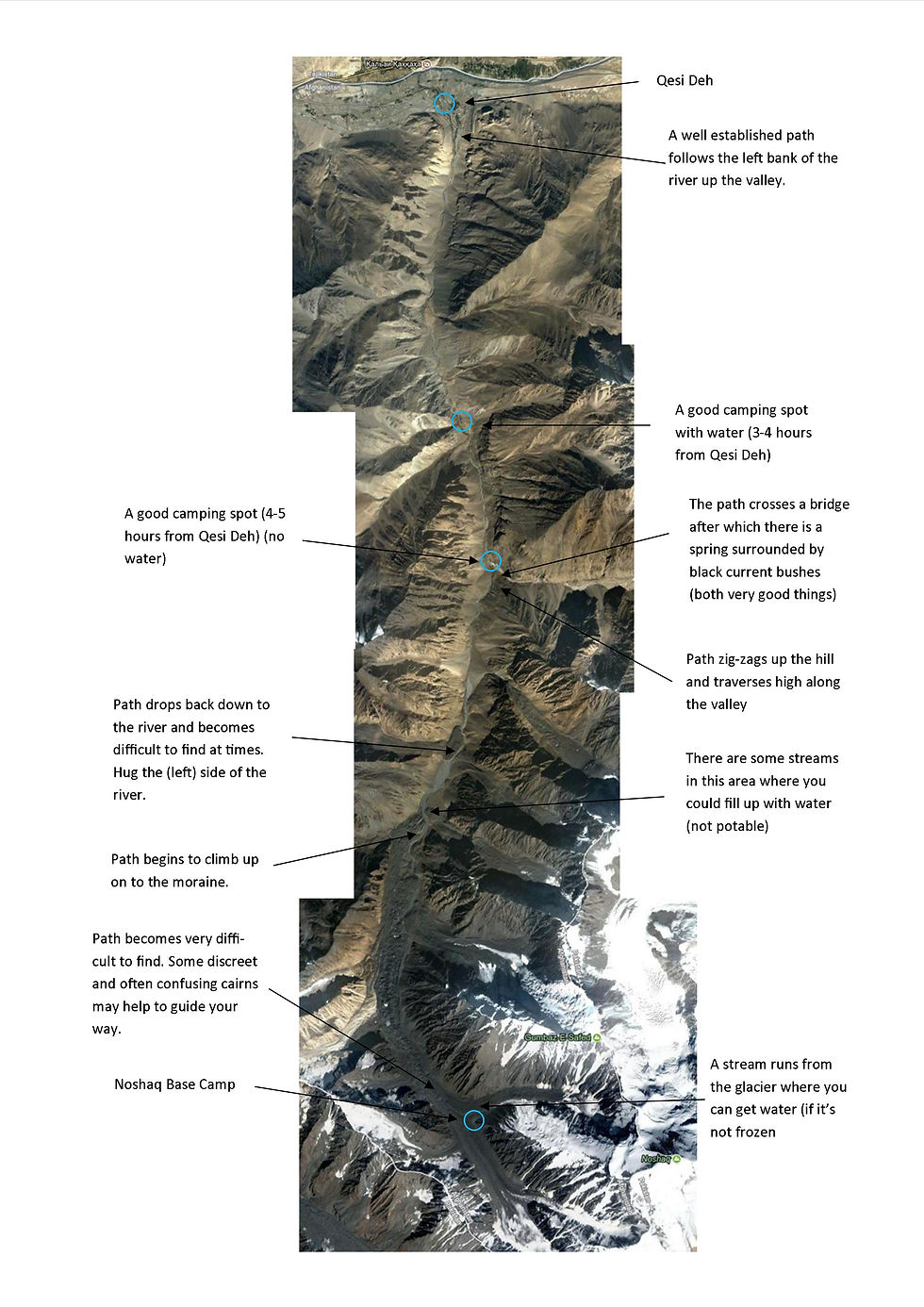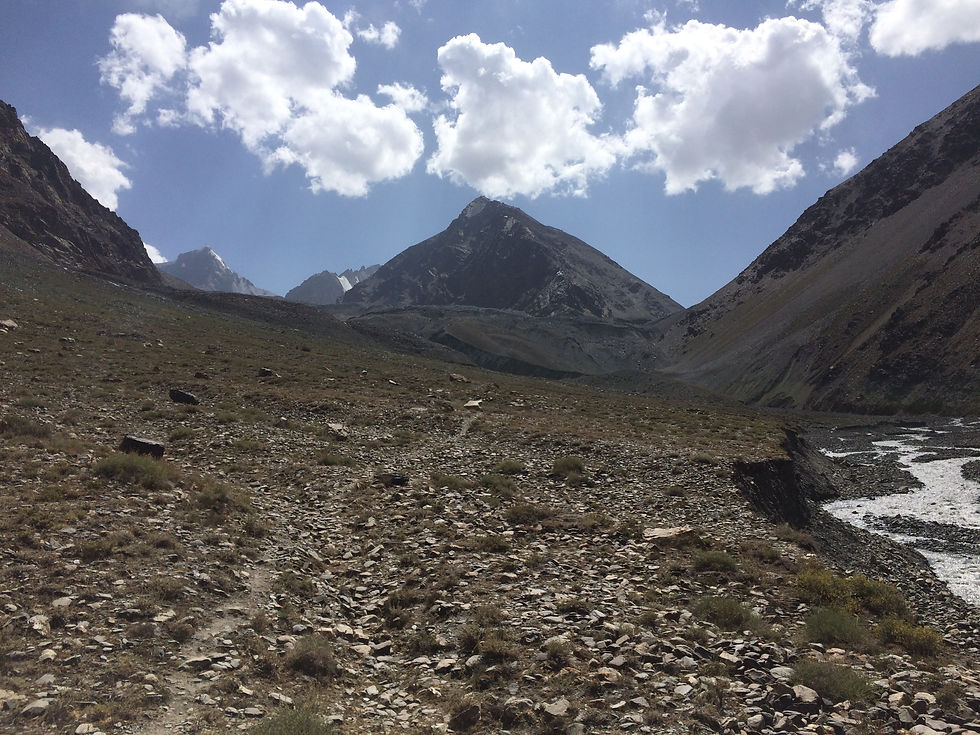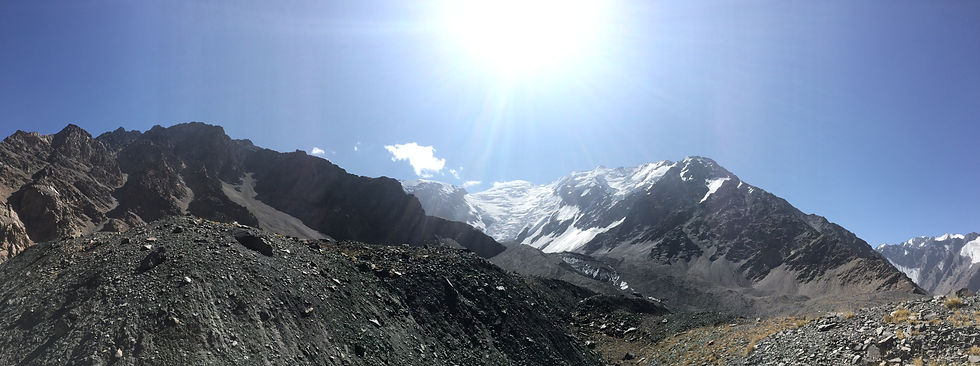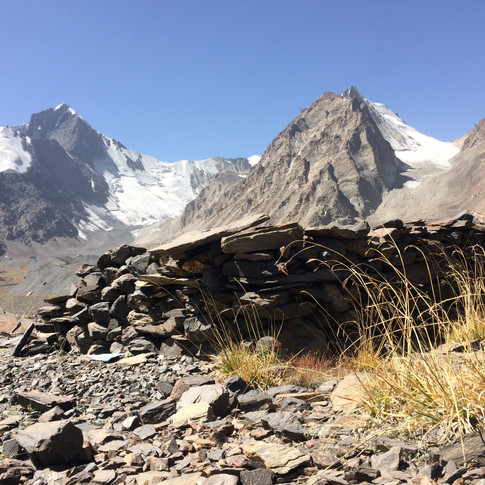Afghanistan: Essential Survival Tips, Noshaq Base Camp and a Close Encounter with the Taliban(ᵃ)
- Alex
- Sep 18, 2017
- 7 min read
Afghanistan. It is not exactly top of the destination list when you’re planning a holiday, even ones that are supposed to be of the ‘adventure’ variety. Nevertheless, I challenge anyone to drive down the Tajik side of the Panj river and not be drawn to its opposite bank. With this in mind, when we arrived in Khorog – a surprisingly pleasant town about 15 hours’ drive south of Dushanbe – and discovered that an Afghan visa was available from the local consulate within 60 minutes, there wasn’t an awful lot of discussion needed, particularly having read about the trek to Noshaq Base Camp – Afghanistan’s highest mountain deep in the Hindu Kush range. Clearly, however, a visit to Afghanistan does not come without a warning, and so we give four top survival tips for those wishing to visit.
1. Just don’t go there.
This is true for 99% of the country (ᵇ), however at its most North-Western tip is a remote strip of land, no more than 40 miles wide, sandwiched between Pakistan and Tajikistan called the Wakhan Corridor. With its ancient customs and traditions, nestled in a seemingly lost world between the Pamir and the Hindu Kush ranges, the region is difficult to resist. Created by the Brits, in so doing what the Brits do best – drawing arbitrary borders on the world atlas with no consideration to local cultures or history, in 1873, the region is populated by Kyrgyz nomads who are, importantly, Ismaili Muslims. This is a necessary differentiation from the rest of the Afghan population who are largely Sunni Muslims, and who have a tendency to be more sympathetic towards the Taliban(ᶜ).
The Taliban, we were re-assured to hear, are thoroughly abhorred throughout the Wakhan, and as a result have nowhere to hide from the authorities.
2. Don’t piss off the police.
Growing up in Cornwall (UK), the first time you see a policeman carrying a gun (probably in France) you can’t help but feel a little intimidated. But the more you travel – particularly in Africa and Central Asia – you get used to the occasional Kalashnikov, normally at border posts. Travel to Afghanistan however, and this is going to ramp up. Significantly. There are military police everywhere and they all have semi-automatic weapons, but it’s the police ‘cars’ that really shake you up. These are not cars but pick-ups (usually Toyota Hilux). However whereas your usual Hilux might be full of chopped wood, farm tools or maybe the occasional - probably imminently doomed - livestock, these ones have what I can only describe as a ‘full-blown machine gun nest’ mounted on the back. Naturally we didn’t take a photo for fear of violating the above rule, so just in case your imagination is failing you, I’ve sketched the image below.

3. Don’t get kidnapped by the You-Know-Who.
If you are in any way as paranoid as us, this particular point will undoubtedly be your foremost concern during your time in Afghanistan.
For ourselves this was not helped by a rather lively debate held at one of the (many) military check points at the start of our trek, during which we overheard the word ‘Taliban’ in a heated discussion between the solider and our inadvertent guide/translator, shortly followed by a rushed exchange of papers and an urgent “Go, go, we must go. Bad(ᵈ) man coming” and being led along a small irrigation canal to the back of the village and our path up the Noshaq valley, where we were promptly left to ourselves to start the four day hike. Needless to say, we spent a significant amount of time looking over our shoulders.
4. Don’t step on a land mine.
That’s right, in case this trip wasn’t hazardous enough, during the Soviet invasion of 1979 and 1989 the Russians (mainly(ᵉ)) laid an estimated 30 million land mines in Afghanistan, making it one of the three most heavily mined countries in the world.
So this begs the question: How do you avoid them? Well your first and best option is to not leave the established path. Ever. This is fine, except when the established path doesn’t appear to exist anymore. Which, for large sections of the trek to Nosaq, it doesn't.
If, like us, you find yourself without a path, apparently mined areas are normally marked by red paint on a large rock. This is conveniently the same colour as most lichen in the area, so that is particularly helpful. Should you be unlucky enough to find yourself in a mine field, the recommended course of action is to return the way you came. Exactly the way you came, so you better hope you can see your footprints.
Finally, they say you can’t outrun an explosion (shocking). So if you stand on a land mine the established advice, if you have any time, is to immediately lie down (presumably not on the mine itself) and thus reduce the surface area of your now very vulnerable self that is exposed to the blast. Sounds great(ᶠ), but in reality I’m sure the procedure runs much more like this;
Step on land mine
Panic
Most probably shit yourself
Most probably lose a leg or two.
The Trek to Noshaq Base Camp - in case you wanted some information that might actually be useful.
If you've not been put off by the above (don't take it too literally), there are numerous options for trekking in the Wakhan depending on how much time you’d like to spend there, and they all sound great. The Tourist Information Office in Khorog (Tajikistan) has some useful information on them. If, like us, you are relatively short on time then Noshaq Base Camp is not a bad option. Starting from Qasi Deh, one of the first villages in the Wakhan and relatively close to Eshkashem – your likely port of arrival, it’s fairly quick and cheap to get to. From here allow four days (although it’s possible in three) following what starts as a well-established path which essentially tracks the valley back up all the way to the Noshaq glacier. There are no decent maps available that we could find, nor was the path shown on Maps.Me at the time we were there. Below is a rather amateur cut-and-paste job from Google Maps with some key camping spots and springs marked.

Finding drinking water is likely to be your biggest problem(ᶢ); the river that you follow up the valley seems, at times, more like a mud-flow, but there are a few smaller streams and one spring that we found along the way that you will need to take advantage of. As far as I could tell, most of the streams are from glacial melt and tend to be clearest in the morning, when the flow is less, and muddier in the afternoon.

Our Camp 1, 4 hours from Qesi Deh just before the path crosses the river.

Further up the valley where the path starts to disappear (don't be fooled, the one in this photo comes to nothing)

The mighty Noshaq (7492m - it's higher than it looks!). The ridge on the right of the photo makes up the Normal Route from the Afghan side.
Noshaq Base Camp (4450m)
Some other useful information
Registration in Eshkashem
This is a pain in the royal backside. Depending on how far into the Wakhan you intend to go, you’ll need up to nine passport photos and several copies of your passport and visa. It’s possible to have these taken / printed / copied in Afghan Eshkashem, but it’s worth sorting it out beforehand if possible. With these you’ll need to find the registration office, which is near the main bazaar (you’ll need to ask someone). After the two hours it takes the official to painstakingly type out your name and passport number, using the classic ‘one finger’ technique, you should have your registration document. From here you’ll need to go to the military police and request a letter from them confirming their permission for you to travel to the Wakhan. After this you need to register at a different office and pay them what is probably a bribe ($20 for us), but since they have big machine guns, you’ll be a braver man than me to argue. To make matters easier, hardly anyone speaks English. Have fun with this.
Transport
This is expensive. The registration office seems to have an official in charge of arranging transport. A taxi to Qasi Deh was quoted at $34 dollars, but if you want to travel to the other end of the Wakhan expect to pay some $300 dollars each way.
Accommodation in Eshkashem
It appears to be local policy that tourists have to stay in specific guest houses, rather than the local ‘hotel’. This was (for us) quite expensive - $25 dollars per person per night, including dinner and breakfast – and I believe it was at the cheaper end of the scale. We stayed at Wafai’s Guest House, which was comfortable enough, if a little basic.
Visas
We were able to get the visa in Khorog, Tajikistan the same day we applied at a cost of $150 each. All we needed was a passport photo, completed application form (issued at the consulate) and a letter to the Consulate General explaining that you know what you are getting yourself into. Having said this, we were advised that the situation can change depending on the Consulate General at the time, and so it’s probably best to get the visa at home before the trip if feasible.
Footnotes.
( ᵃ ) Slight exaggeration here, but at least it got your attention.
( ᵇ ) I read once that 97.3% of statistics were made up on the spot. This – along with the one quoted earlier in this footnote – is one of them. There may be other regions you can visit, I haven’t researched this and have no intention of doing so.
( ᶜ ) I don’t like sweeping generalisations like this, and I’m sure the majority of Sunni Muslims do not tolerate the Taliban, but our understanding from speaking with locals was that in the Sunni regions there are more likely to be places for them to successfully hide from authorities.
(ᵈ ) I heard ‘bad,’ Alice suggests this could have been ‘big.’ I am going with my interpretation, naturally.
( ᵉ ) Mujahidin forces were apparently responsible for some.
( ᶠ ) Like a barrel of laughs no less.
(ᶢ) Besides points 1-4 above, obviously.













Commentaires